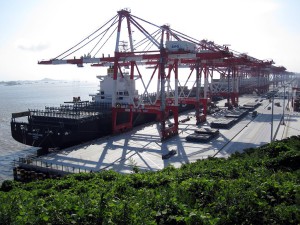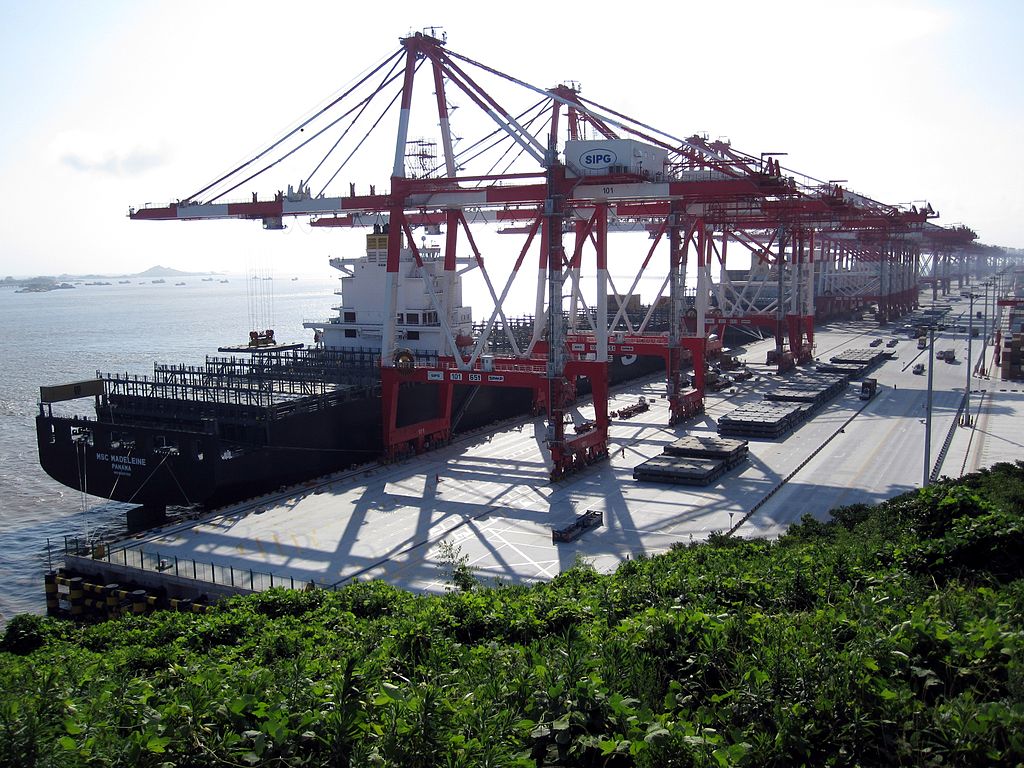Chinese President Xi Jinping has been a busy man. After visits to Tajikistan, the Maldives, and Sri Lanka, Mr. Xi is currently in India for a landmark summit with newly elected Indian Prime Minister Narenda Modi. The primary motivation for this four-country tour is the promotion of the Silk Road and Maritime Silk Road (MSR) initiatives. These initiatives are modern day re-imaginings of the historic silk trade routes in Central and Southern Asia that ferried goods from China to Europe and the Middle East for hundreds of years.
The Silk Road initiative (also known as the Silk Road Economic Belt) is a series of economic agreements and infrastructure projects designed to enhance China’s economic integration with the various states of Central Asia (hence Mr. Xi’s visit to Tajikistan). The MSR, on the other hand, is a more ambitious series of economic agreements and infrastructure projects that span the South China Sea and Indian Ocean, and is vaguely reminiscent of Imperial Chinese Great Admiral Zheng He’s various voyages in the 15th century.

Stretching from Fujian in southern China through the Indian Ocean and all the way up to Venice, Italy, the MSR is grand in scope. China hopes to develop the MSR by funding the construction and modernization of deep-water ports in the Maldives, Sri Lanka, Bangladesh, and Pakistan. According to Mr. Xi, the proposed development of ports in these countries would stimulate trade between China and its partners by reducing the cost of Chinese exports, shortening supply chains, and standardizing customs regulations.
Though seemingly too ambitious to be practical, the MSR begins to make sense when viewed in the context of how China fits into the global economy. Much of China’s trade flows through the sea-lanes of the South China Sea and Indian Ocean to and from ports in the Middle East, Africa, Europe, and South America. The Indian Ocean in particular is of strategic importance to the Chinese economy. China imports the majority of its crude oil, which it needs to power its economy and military, from countries in the Middle East through the Strait of Hormuz and the Strait of Malacca, two critical maritime chokepoints. In fact, the Center for Strategic and International Studies, an American think tank, estimates that 15.2 million barrels of crude oil pass through the Strait of Malacca each day, a third of which are destined for China.
The proposal of the MSR has been well received by many countries in Southeastern Asia and the Indian Ocean. Sri Lanka in particular has benefited greatly from Chinese investment and the MSR initiative. China has helped Sri Lanka rebuild from its long civil war and financed the construction of a $1.4 billion USD port in Colombo, called Colombo Port City, that is to be Sri Lanka’s MSR stop. Pakistan has also seen the construction of a Chinese-financed deep-water port at Gwadar, close to the Strait of Hormuz.
However, not everyone is completely sold on the idea of the MSR. China’s newfound interest in the Indian Ocean is especially unnerving to India. While India has been invited to join the MSR initiative, it too relies on maritime oil imports from the Middle East and considers the Indian Ocean vital to its national security. There are many in the country who worry that the MSR is a part of China’s attempt to contain India by developing a “string of pearls”(a series of naval bases) to secure its interests in the Indian Ocean region.
These fears are not unfounded. Given the amount of Chinese trade and strategic resources that passes through the Indian Ocean, the region is of the utmost importance to China. China has embarked upon a grand naval modernization program (one that has outpaced India’s own naval modernization program) that has greatly increased the capabilities of the People’s Liberation Army-Navy (PLA-N) and its ability to operate far from its bases. By developing a series of ports in the Indian Ocean, the PLA-N would be able to dramatically increase its presence in the region and prevent the closure of the vital sea-lanes that China relies on.
At the moment, India’s fears of encirclement appear premature. Visits by Chinese naval vessels to the various ports of the MSR are relatively rare and despite rapid gains, the PLA-N does not have the capability to base warships long-term at any of these ports.
If fully realized, the MSR has the potential to transform Indian Ocean trade and enhance cooperation in the region. While Robert Kaplan’s 2009 prediction of a “dynamic great power rivalry”in the Indian Ocean has not yet come to pass, the ingredients for such a rivalry are present. Depending on how it develops, the MSR could ignite or defuse this powder keg.




